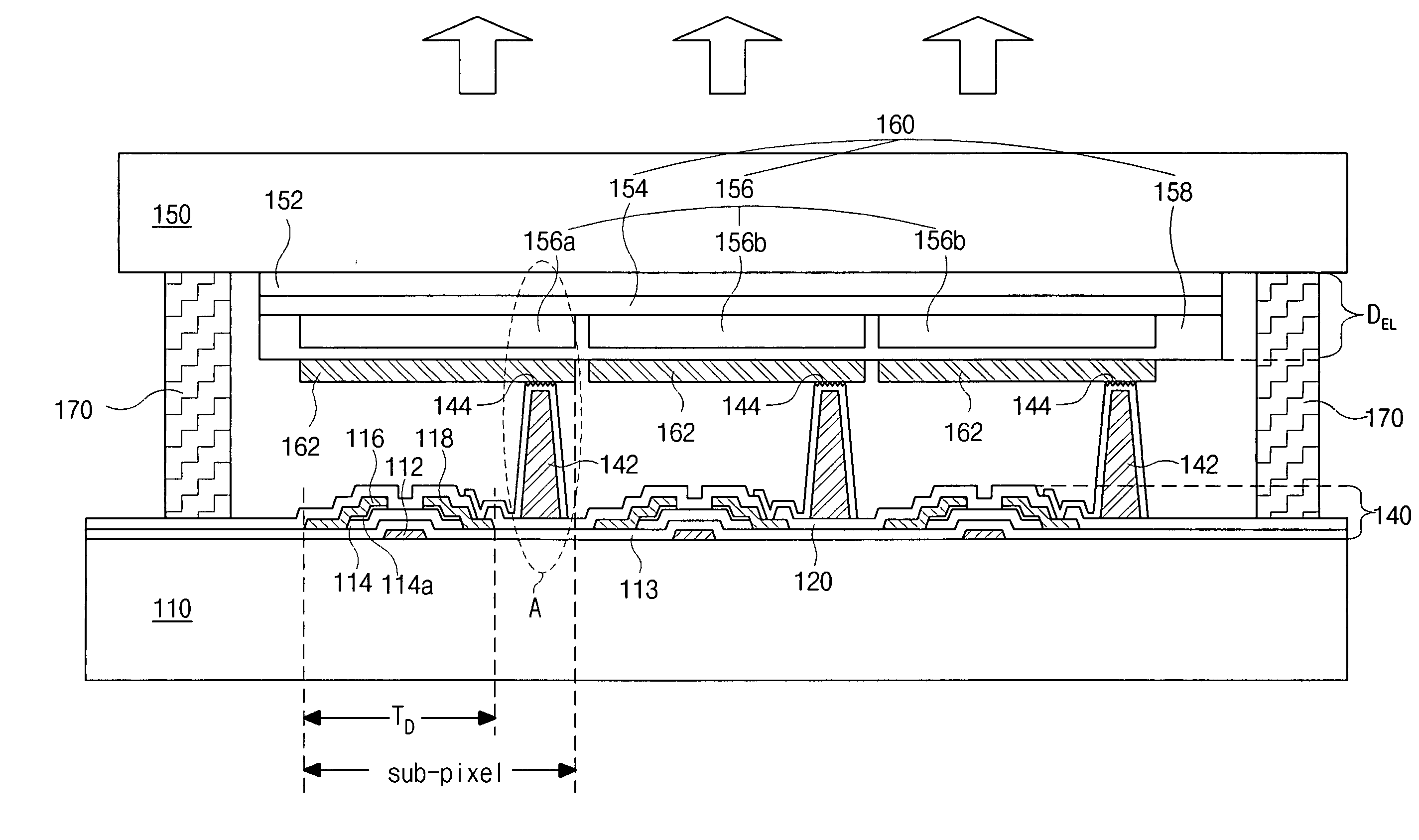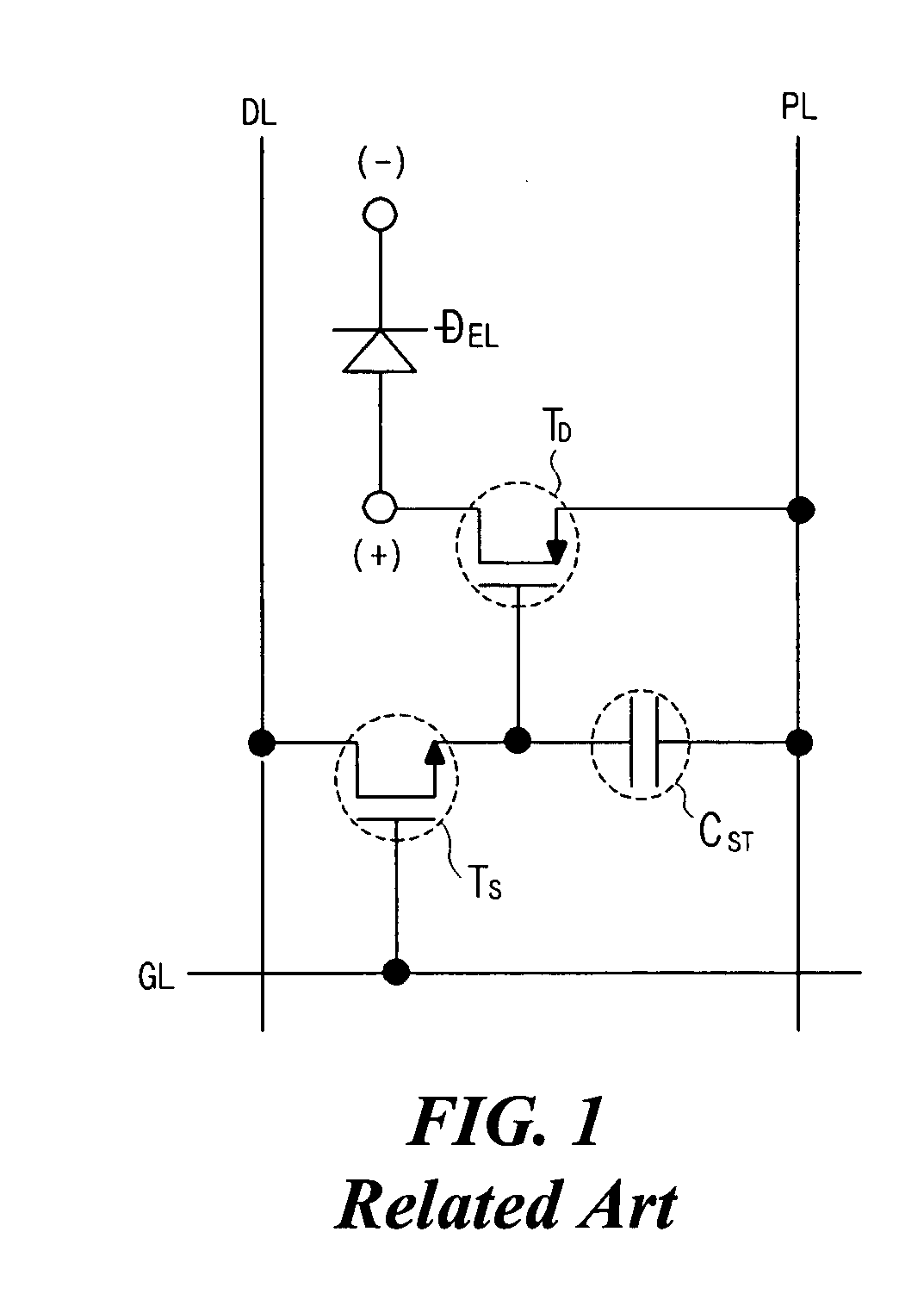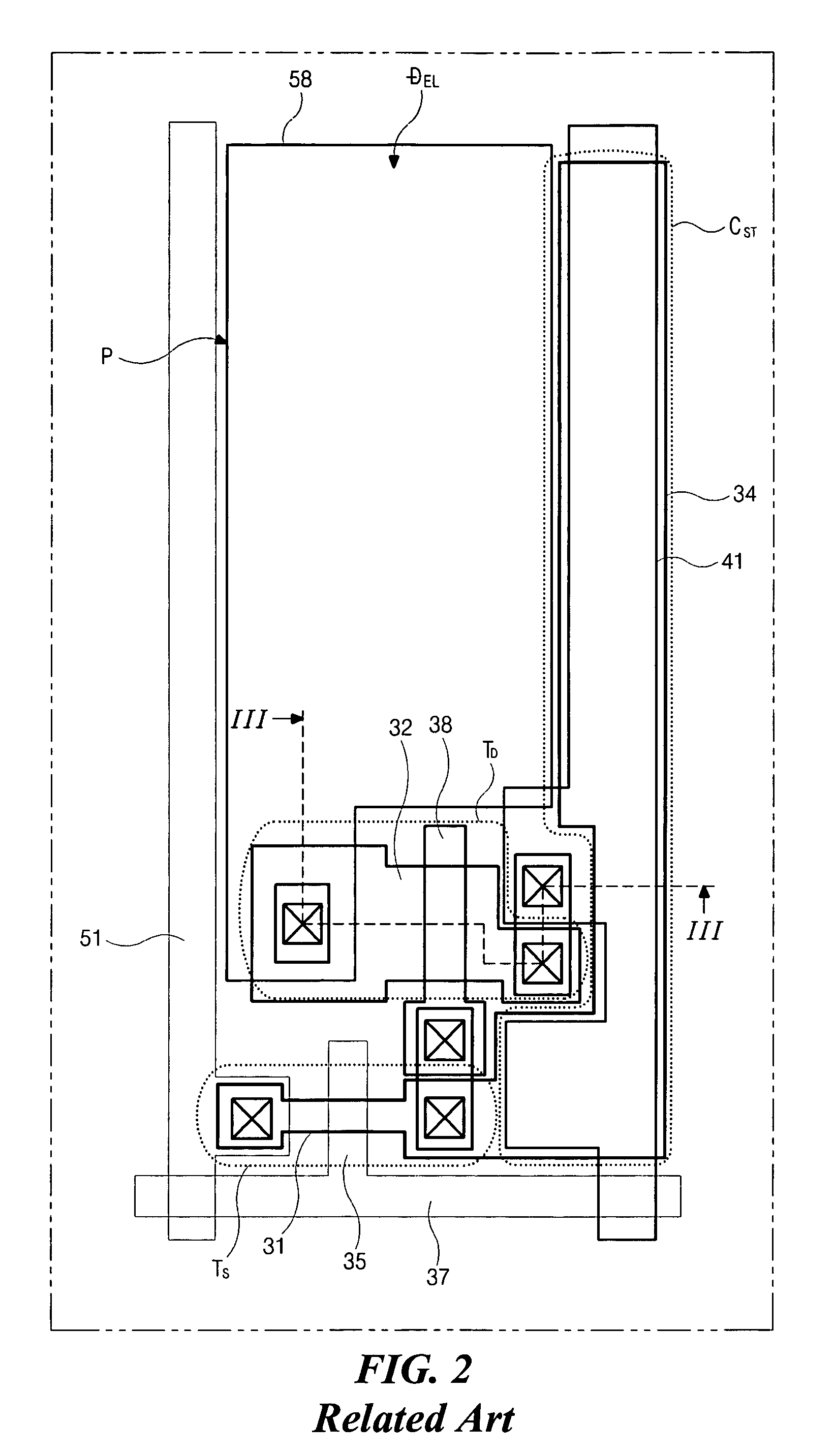Dual panel-type organic electroluminescent device and method for fabricating the same
- Summary
- Abstract
- Description
- Claims
- Application Information
AI Technical Summary
Benefits of technology
Problems solved by technology
Method used
Image
Examples
Embodiment Construction
[0055] Reference will now be made in detail to the preferred embodiments of the present invention, examples of which are illustrated in the accompanying drawings.
[0056]FIG. 6 is a cross-sectional view of an exemplary dual panel-type OELD device according to an embodiment of the present invention. As shown in FIG. 6, first and second spaced-apart substrates 110 and 150, which both include inner surfaces facing each other, have a plurality of sub-pixel regions. An array layer 140 including a driving thin film transistor (TFT) TD within each sub-pixel region can be formed on an inner surface of the first substrate 110. A connection pattern 142 is formed on the array layer 140. A connection electrode layer 144 covers the connection pattern 142 and is connected to the driving TFT TD. The connection pattern 142 and the connection electrode layer 144 are disposed within each sub-pixel region. The connection electrode layer 144 may include conductive material, such as a metallic material, ...
PUM
 Login to View More
Login to View More Abstract
Description
Claims
Application Information
 Login to View More
Login to View More - R&D
- Intellectual Property
- Life Sciences
- Materials
- Tech Scout
- Unparalleled Data Quality
- Higher Quality Content
- 60% Fewer Hallucinations
Browse by: Latest US Patents, China's latest patents, Technical Efficacy Thesaurus, Application Domain, Technology Topic, Popular Technical Reports.
© 2025 PatSnap. All rights reserved.Legal|Privacy policy|Modern Slavery Act Transparency Statement|Sitemap|About US| Contact US: help@patsnap.com



